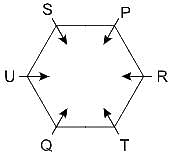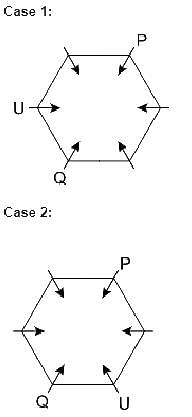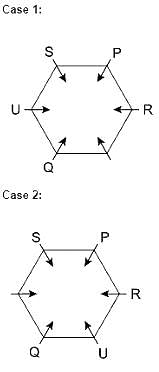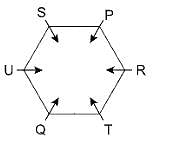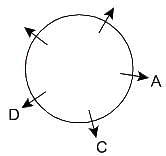MP Police Constable Mock Test - 3 - MP Police Constable MCQ
30 Questions MCQ Test - MP Police Constable Mock Test - 3
Which one of the following statement is incorrect about the beliefs and Faiths of the Kuka Sect:
Which of the following utility approach suggests that utility is a measurable and quantifiable entity?
Which of these is not allowed under the Culture and Educational Right in India?
Which of the following UN agencies are engaged in a number of programmes in cooperation with the Government of India according to the passage?
Which of the following is NOT a solution to unemployment in Nigeria?
Which of these features were accepted by all the Indian leaders much before they sat down to make the Constitution?
Which of the following represents persons seated at the two extremes?
Direction: Study the following information carefully and answer the given questions besides.
Some boys are sitting in a row facing the south. Only three boys sit between O and H. Only two boys sit to the left of J. O sits third to the left of M. More than seven boys sit between P and J. V sits fourth to the right of O. Eight boys sit between R and J. More than 12 boys sit between P and H. Only three boys sit between R and M. T sits third to the right of M. P sits fourth to the right of R.
Q. At least how many boys are sitting in a row?
P is father of S. Q is mother of R. R is the mother of S. How is Q is related to S?
Directions: Read the given information carefully and answer the questions given beside:
A certain number of people are sitting in a row watching F1 racing. All of them are facing towards the south direction. The distance between any two adjacent persons is the same.
The number of people sitting between A and C is the same as the number of people sitting between X and C. At most 25 people are sitting in a row. X is an immediate neighbour of D, who sits on one of the ends. Two people are sitting between A and Z. The number of people sitting between D and C is the same as the number of people sitting between C and Y. C sits fourth to the right of Z. The number of people sitting to the right of A is the same as the number of people sitting to the left of Z.
Q. Who sits two places away from Y?
Direction: Study the following information carefully and answer the given questions besides.
Six people P, Q, R, S, T and U are sitting at different corners of a hexagonal table, all facing the centre of the table. Only one person is sitting between P and U. S is sitting second to the right of R. T is not sitting beside S. Exactly two persons are sitting between P and Q.
Q. Who among the following sits exactly opposite to U?
Seven persons B, C, D, E, F, G and H are born on seven different months of a year starting from January, but not necessarily in the same order. Who was born in July?
Statement I: C was born just before D. Only two persons are born after H. Three persons are born between H and B. F was born two months after B.
Statement II: E was born in April. D was born after C. Two persons are born between E and B. B was not born in July. C was born one of the months after May.
Directions: Each of the following consists of a question and two statements numbered I and II given below it. You have to decide whether the data provided in the statements are sufficient to answer the question.
Certain words are coded in the following manner in a code language. Find the code for “truck train”?
Statement I: “train of steam” is coded as "126 184 115" and “steam start truck” is coded as "110 126 145".
Statement II: “truck of white” is coded as "113 184 110" and “train of start” is coded as "115 145 184".
Direction: If a Paper (Transparent Sheet) is folded in a manner and a design or pattern is drawn. When unfolded this paper appears as given below in the answer figure. Choose the correct answer figure given below.
A piece of paper is folded and cut as shown below in the question figures. From the given answer figures, indicate how it will appear when opened.
Question Figure

Answer figure

Which Answer figure will complete the Question figure?
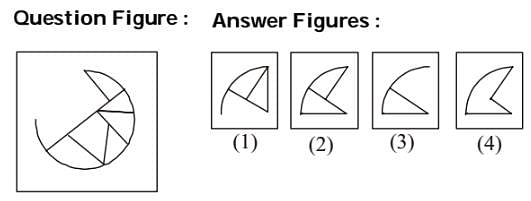
'Cat' is related to 'Kitten' in the same way as 'Woman' is related to:
Direction: Study the following question carefully and choose the right answer.
If ACNE can be coded as 3, 7, 29, 11 then BOIL will be coded as ….?
Directions: Each of the following consists of a question and two statements numbered I and II given below it. You have to decide whether the data provided in the statements are sufficient to answer the question.
A, B, C, D and E are sitting around a circle and facing away from the centre. Who sits second to the right of B?
Statement I: A sits to the immediate left of C. D sits second to the right of A.
Statement II: D sits immediately between E and B. B sits to the immediate left of A.
A ship is approaching an observation tower. If the time taken by the ship to change the angle of elevation from 30° to 45° is 10 minutes, then find the time the ship will take to cover the remaining distance and reach the observation tower assuming the ship to be travelling at a uniform speed.
80 men can complete a work in 40 days and 50 women can complete the same work in 40 days. If the efficiency of each man is the same and the efficiency of each woman is also the same, the efficiency of each man is what percentage of the efficiency of each woman?










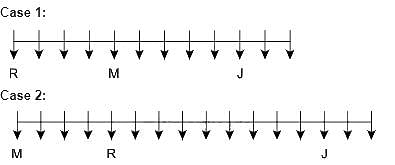


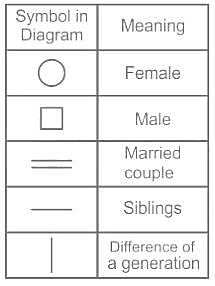
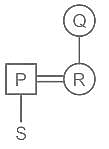

 Hence, Case 1 is the final arrangement.
Hence, Case 1 is the final arrangement.